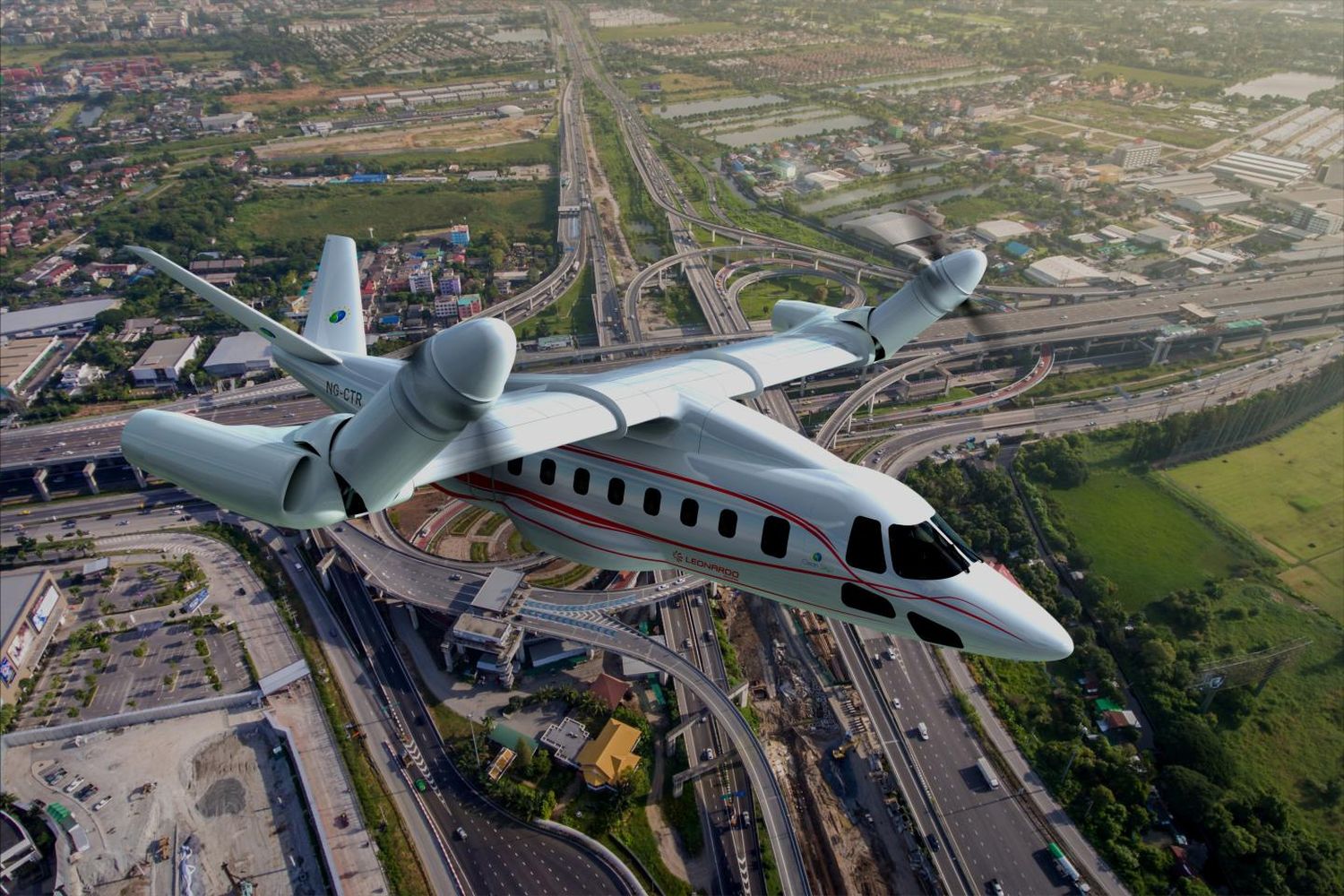NGCTR demonstrator: Leonardo validates key technologies for the future of European TiltRotor
Leonardo takes an important step in the development of the Next Generation Civil Tiltrotor (NGCTR) aircraft with the first ground engine start-up test.
The next phase of the program calls for intensive testing in the coming months, with the goal of first flight by the end of 2024 and, subsequently, accumulating 200 flight hours to expand operational capabilities in helicopter and airplane mode. The NGCTR demonstrator was built by Leonardo to design, develop and demonstrate in flight innovative technologies for TiltRotor architecture.
The demonstrator uses the AW609 airframe adapted with new technologies, such as an advanced wing architecture; a «V» tail configuration to reduce aerodynamic drag; a non-tilting engine section to allow more propeller options with no ground exhaust and less acoustic impact; and a fly-by-wire control system based on a modular, distributed and scalable flight control system. In addition, the engine nacelle architecture features high efficiency, capable of reducing aerodynamic drag and improving controllability in vertical takeoff and landing flight modes.

Since its inception, the project has been driven by the need to develop technologies for cleaner skies in the field of vertical take-off and landing (VTOL). With a cruise speed of 280 knots – twice that of typical helicopters and close to that of turboprop aircraft – the NGCTR-TD aims to reduce CO² emissions and noise impact compared to conventional rotary-wing aircraft of the same weight and size category.
The construction of the NGCTR demonstrator was initiated by Leonardo in 2015 in the framework of Clean Sky 2, an EU-funded initiative for the development and validation of technologies aimed at reducing environmental impact and strengthening the European aerospace supply chain. After a first design and development phase, characterized by a technical review process of the system engineering, the assembly was completed in June 2024.
As Massimo Biggi, Next Generation Fast Rotorcraft Programs Manager at Leonardo Helicopters, explained, “the NGCTR-TD, the first clean-sheet European tiltrotor concept design in years, has enabled Leonardo to develop and test the core technologies needed to flight test a next generation high speed aircraft with long range and vertical take-off and landing capabilities.”
This initiative, which is part of the Clean Sky 2 project, is one of the key projects of Leonardo’s sustainability plan. An important example of advanced technologies in the field of mobility, able to combine performance and emission reduction, with a positive impact on the safety of citizens.
Military applications
NGCTR technology has clear military applications and the technological solutions adopted by Leonardo in its technology demonstrator are clearly reminiscent of those incorporated by Bell in the V-280 Valor, the winning design of the FLRAA (Future Long Range Assault Aircraft) competition to replace the U.S. Army’s fleet of UH-60 Black Hawk helicopters.

This resemblance is no coincidence, as the two companies have had strong partnership ties for decades, with Bell having much to do with the development of the Leonardo AW609 and teaming up to provide their tilt-rotor technology for the Next Generation Rotorcraft Capability (NGRC) program, which aims to develop NATO’s next generation of helicopters.


Comentarios
Para comentar, debés estar registrado
Por favor, iniciá sesión